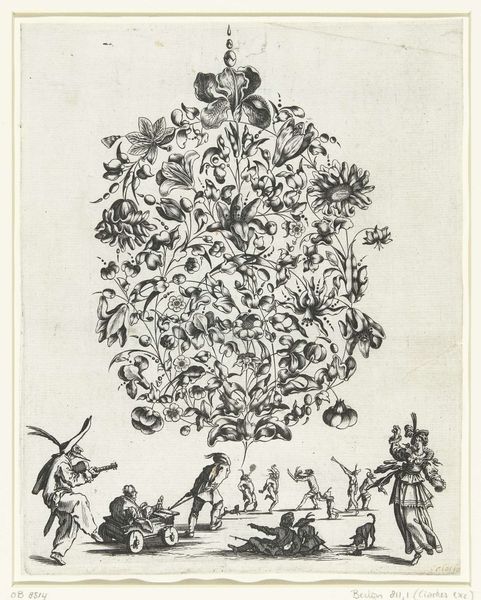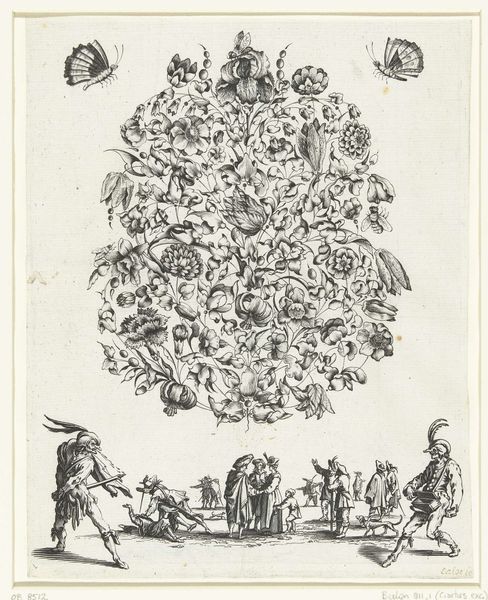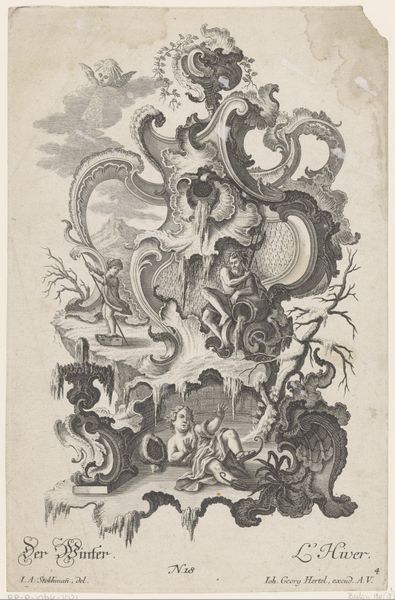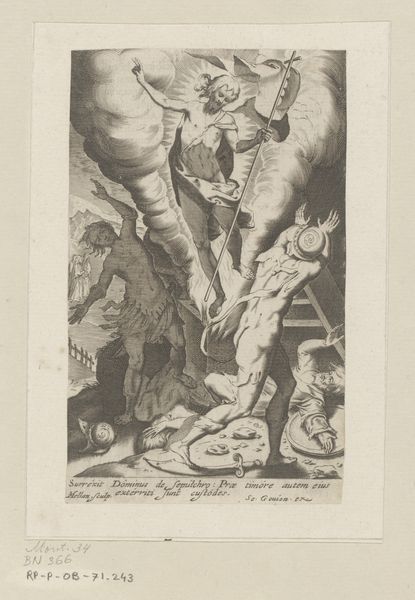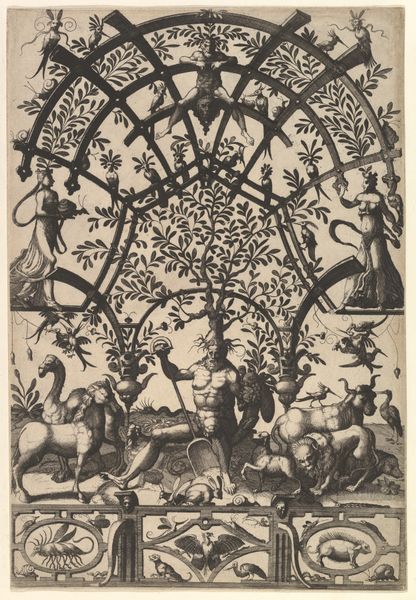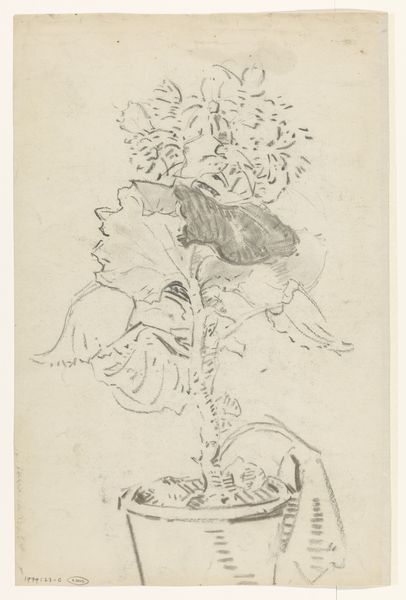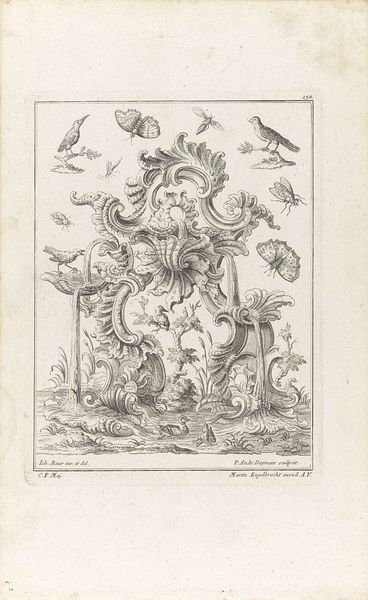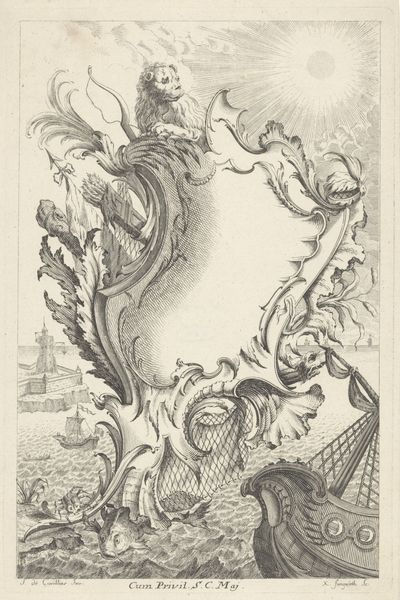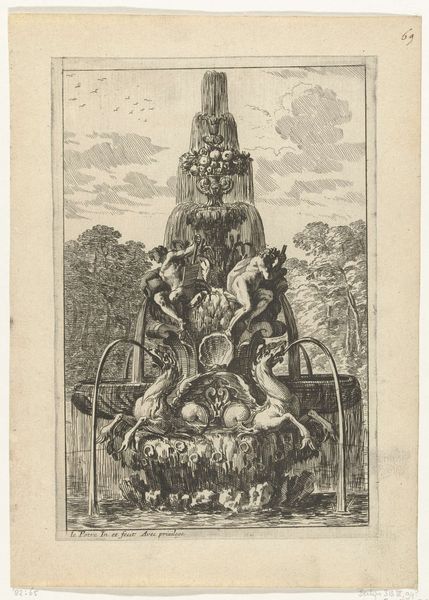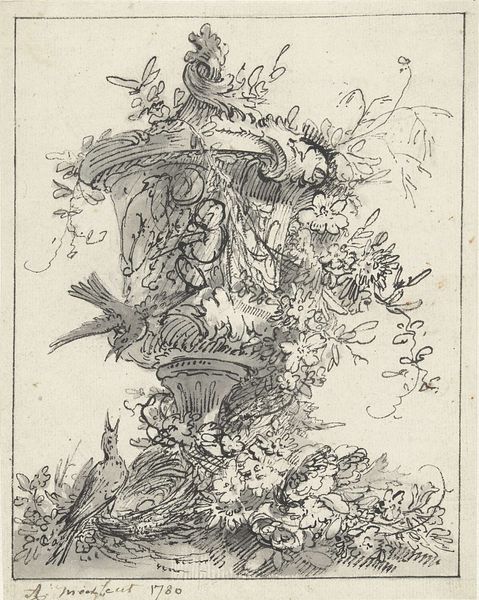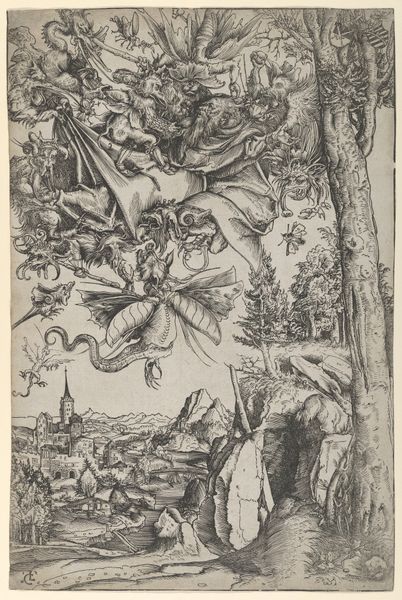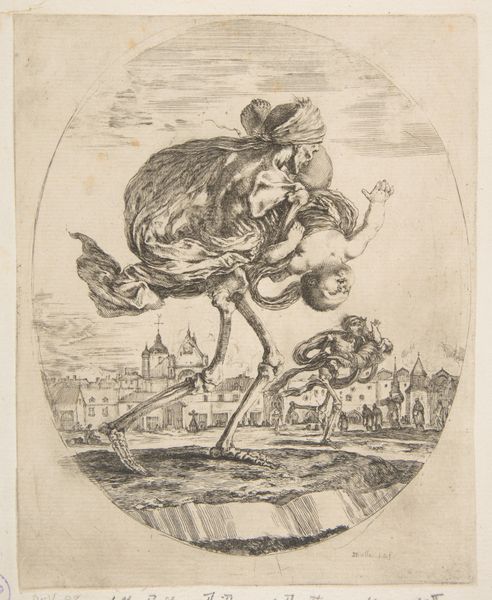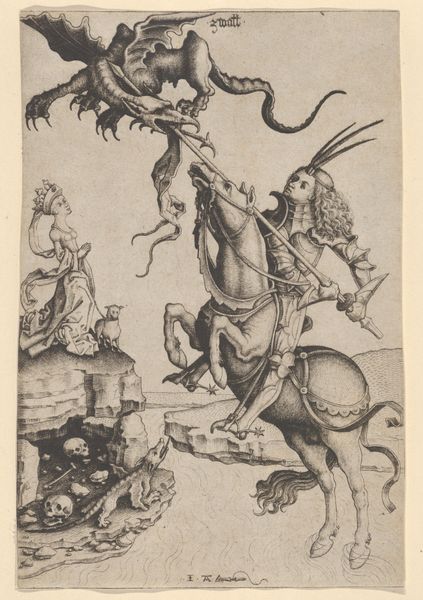
drawing, mixed-media, print, etching, engraving
#
portrait
#
drawing
#
mixed-media
#
narrative-art
#
baroque
# print
#
etching
#
landscape
#
figuration
#
line
#
genre-painting
#
engraving
Dimensions: height 302 mm, width 242 mm
Copyright: Rijks Museum: Open Domain
Editor: Here we have Isaac Briot's "Boeket op rug van marskramer," from 1635. It's a black and white engraving. My first impression is that it’s a whimsical piece, with a very exaggerated sense of weight and burden. The flowers are beautifully rendered, but they completely dwarf the figure carrying them. What are your thoughts, and what historical context can you give to this seemingly strange piece? Curator: This is indeed an intriguing engraving! From a historical perspective, we can analyze how Briot uses the image of the peddler, the marskramer, not merely as a genre scene, but as a social commentary. These itinerant merchants were common, their labor often romanticized, but their lives were very difficult. Editor: So, the flowers… Curator: Consider what it means to overload a common laborer with an impossible bounty of nature's beauty. Is Briot celebrating Dutch commerce, or critiquing its exploitative tendencies? The elaborate detail might also point to the Baroque fascination with the symbolic weight of ornamentation. The flowers, while beautiful, obscure the human figure struggling beneath. Editor: It's interesting how you interpret it as a possible critique, I initially just saw it as a playful composition. Curator: Does that change how you view it? Think about the power structures represented in art, and who has the privilege of adorning themselves while others bear the load, quite literally here. The social role of the artist also needs some consideration: Who was this engraving made *for*? What stories was it meant to tell? Editor: I never really considered the political angle. Thanks, now I'm walking away thinking this artwork actually shows how beauty could be a burden and it makes me think about social inequities in that time period. Curator: And hopefully how we see those burdens still existing now. This perspective might encourage audiences to examine other works of art in relation to their sociopolitical environment.
Comments
No comments
Be the first to comment and join the conversation on the ultimate creative platform.
